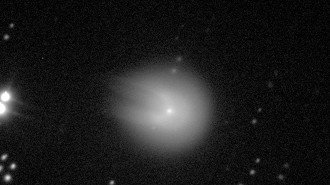The solar eclipse was a remarkable event, particularly for those who witnessed it firsthand. Now, we anticipate another uncommon and captivating astronomical event. The eagerly awaited Comet of the Devil is expected to pass through the skies of the Southern Hemisphere starting from April 21. Referred to as 12P/Pons-Brooks, the comet is already observable in the sky, particularly when using small telescopes.
What is the Devil’s Comet?
Discovered in 1812, this star is around 29 kilometers wide, which is roughly three times larger than Mount Everest. It is renowned for its greenish hue and horn-shaped tail.
The comet’s movement from Andromeda to Pisces, passing by bright stars, aids in its tracking on certain dates. On March 31, it was near a bright star called Hamal, making it easier for observers to locate.

This comet’s notable characteristic is its cryovolcanic activity, causing it to expel ice and gas forcefully, resulting in explosions visible without specialized telescopes.
How to watch attentively
The astronomer Theodore Kareta points out that the 12P/Pons-Brooks comet experiences rapid brightening, making it visible in the sky at times without the need for special equipment.
The comet will keep moving towards the Sun until early June, when it will come closer to Earth, approximately 232 million kilometers away. Binoculars will be needed to see it clearly due to the distance from the Sun.
Prepare yourself!
The optimal time to view the 12P/Pons-Brooks comet is during the evening of April 23, with the assistance of binoculars.
After passing through our solar system, the ‘Devil’ will be sent back into space and won’t come back until 2095, making it a rare chance to observe this peculiar astronomical event.


